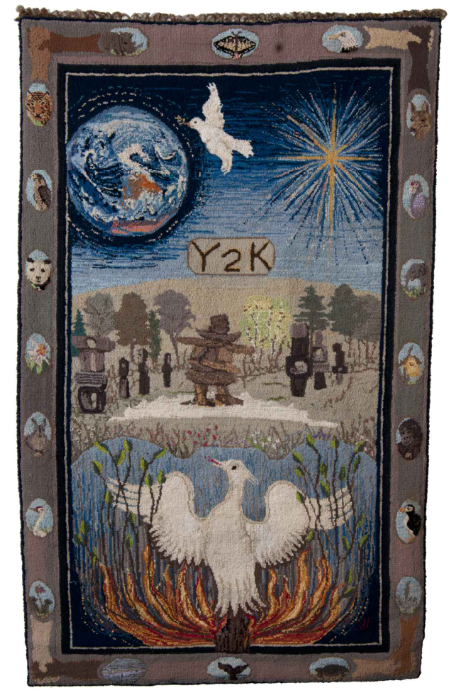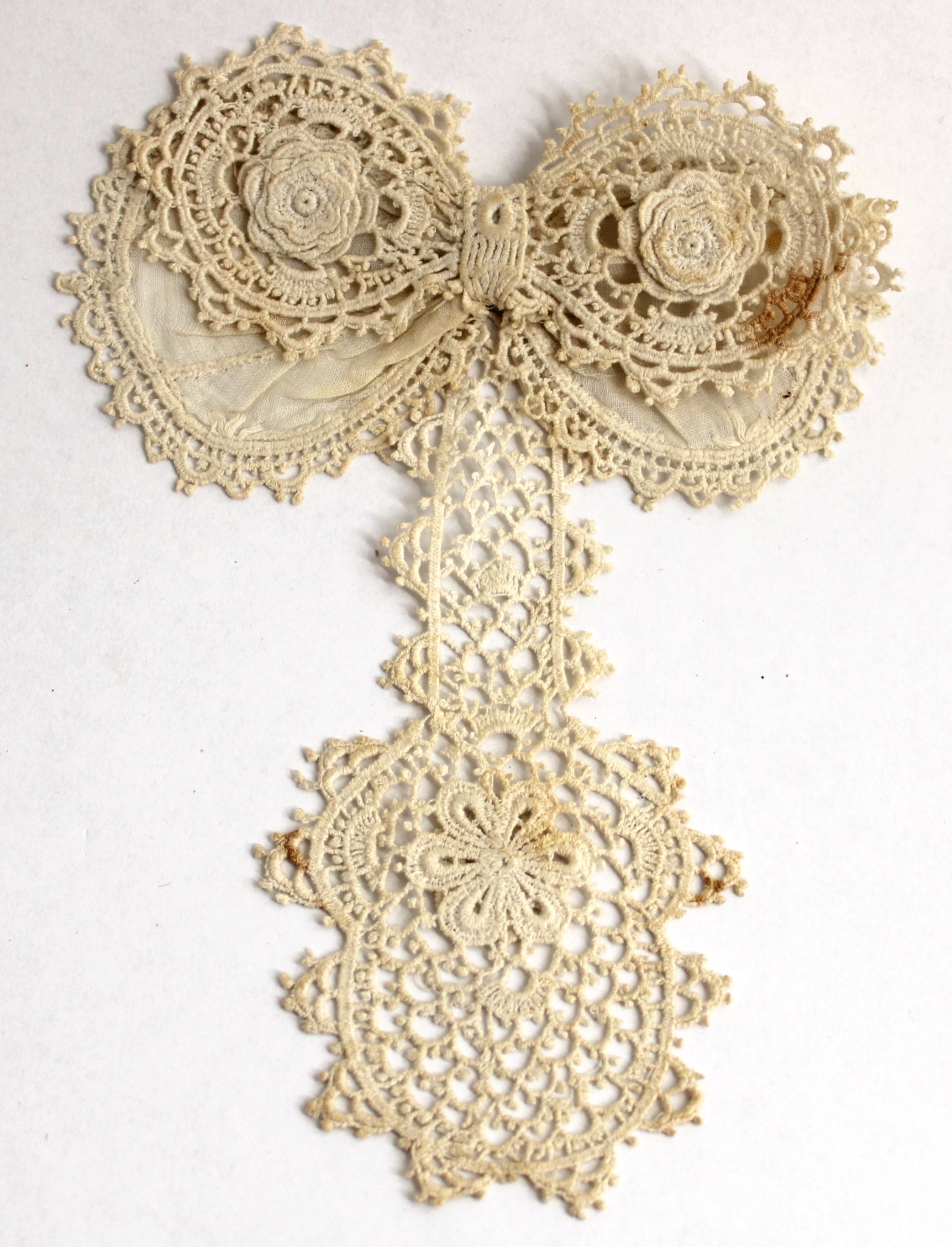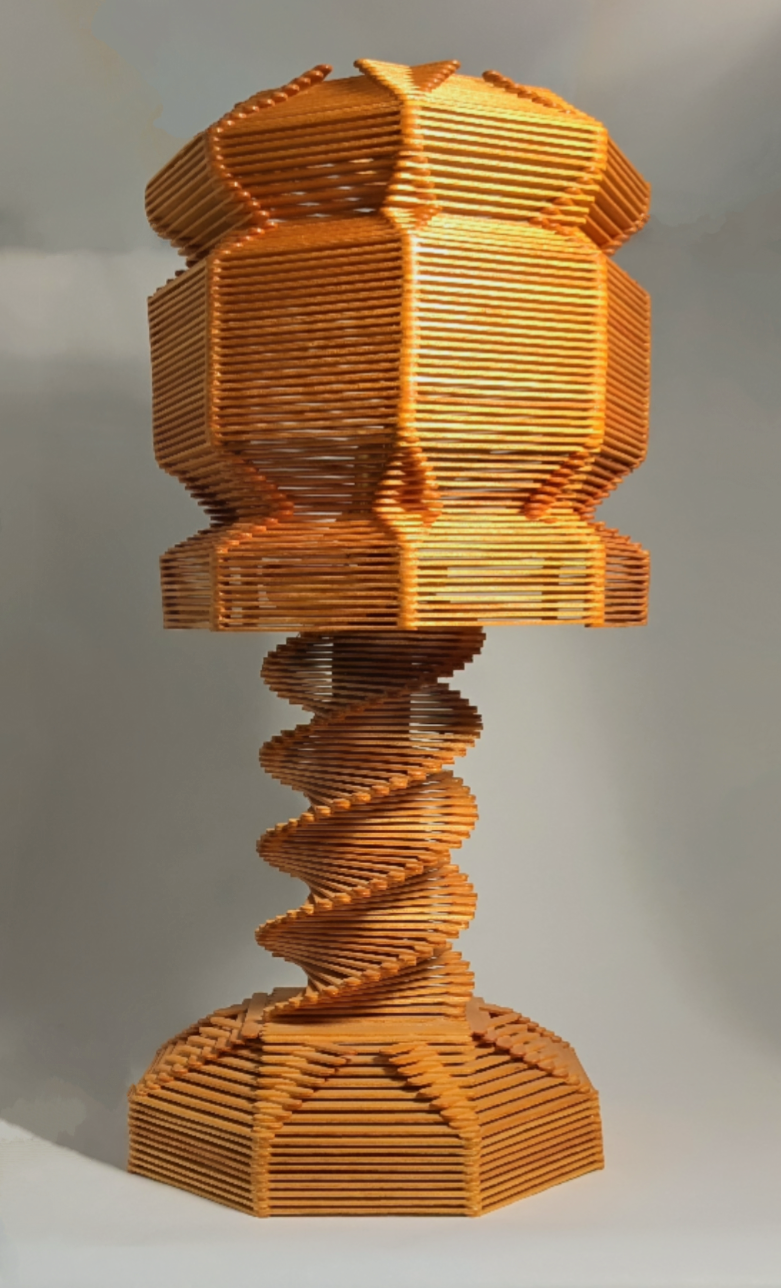Camp is an aesthetic but it is not just one thing. Think extravagant over the top, but also weird and comedic, sometimes confusing but never simple or boring. The idea of camp and being so extreme has always been around in society. Though the term camp itself was not common until the writer Suzan Sontag wrote, Notes on “Camp”, in 1964, which was dedicated to Oscar Wilde who she and many others, felt really embodied the concept and aesthetic of camp. Camp is most often associated with fashion such as the camp themed 2019 Metropolitan Museum of Art Gala. But, camp is everywhere, such as some of the great works of art we have here at the Manitoba Crafts Museum and Library. Using Sontag’s Notes on “Camp” this blog showcases pieces in the MCML collection that embody the idea of camp.
In no particular order, we start the list with an amazing hooked rug b y Delza Longman, Millennium Hanging (wall hanging). The piece created to celebrate the year 2000, shown through the Y2K detail. It goes beyond necessary to deliver the point of time changing and life moving forward, embodying the camp aesthetic. The piece is made of recycled nylon tights that Longman would collect and divide by colour. A slightly unusual way of making a hook rug wall hanging but again just illustrates the camp of the piece and Longmans practice.
y Delza Longman, Millennium Hanging (wall hanging). The piece created to celebrate the year 2000, shown through the Y2K detail. It goes beyond necessary to deliver the point of time changing and life moving forward, embodying the camp aesthetic. The piece is made of recycled nylon tights that Longman would collect and divide by colour. A slightly unusual way of making a hook rug wall hanging but again just illustrates the camp of the piece and Longmans practice.
The next piece falls more into the comedy of camp with its unusual shape. Jabots are a form of neck accessory. Think Austin Powers in his famous blue suit that little frilly piece is the jabot. Jabots have been around far longer then Austin Powers dating back to the early 19th century.

This jabot does not follow the typical conventions of a tie. Rather, the usual shape resembles a specific body part and for that specific reason its camp. While maybe not intended by the original maker, we can now look back at it for its silly shape and rather unusual look when worn.
This coaster features weird little horse with wiggly legs. The red body of the horse has a blue shadow like detail around it. The oddness of this horse and the horrible anatomy makes it seem like a joke, which is oh so camp in aesthetics. What is its purpose but to be oddity and exist out of the norm? It embodies the indescribable camp aesthetic.
This attention-grabbing parasol is just so campy and fun. Parasols associated with high-class are often camp from their dramatic approach to sun protection by those who still want an elegant flair.

Accessioned back in 1995 these unique lamps have been waiting for their moment to shine again. Thinking about Mark Booth’s, 1983 note on what is camp “Camp is mock luxurious.” (https://www.metmuseum.org/exhibitions/listings/2019/camp-notes-on-fashion/quotes-on-camp) really embodies the aesthetics of these lamps. They seem luxurious, intercut, and expensive. They’re rather cheap in material, being made from popsicle sticks in a simple layering pattern they sell the idea of mock luxuries. The cheap material is well used to create the aesthetic of luxury. The lamps are not your usual style nor typical material but these decision made by the arts ups its camp value. The popsicle sticks are youthful reminding you of childhood from the sweet delight of a popsicle or making little crafts with the left over sticks. The childlike playful energy juxtaposed to the mature cleanly well done layering of the lamp is a reminder of our ever aging lives and to stay playful. To stay playful we must embrace the aesthetics of camp, learn to laugh more, not take everything so seriously. Be creative, colourful, and above all stay weird. Explore camp craft works or make your own and play around in the beauty of the oddity.



